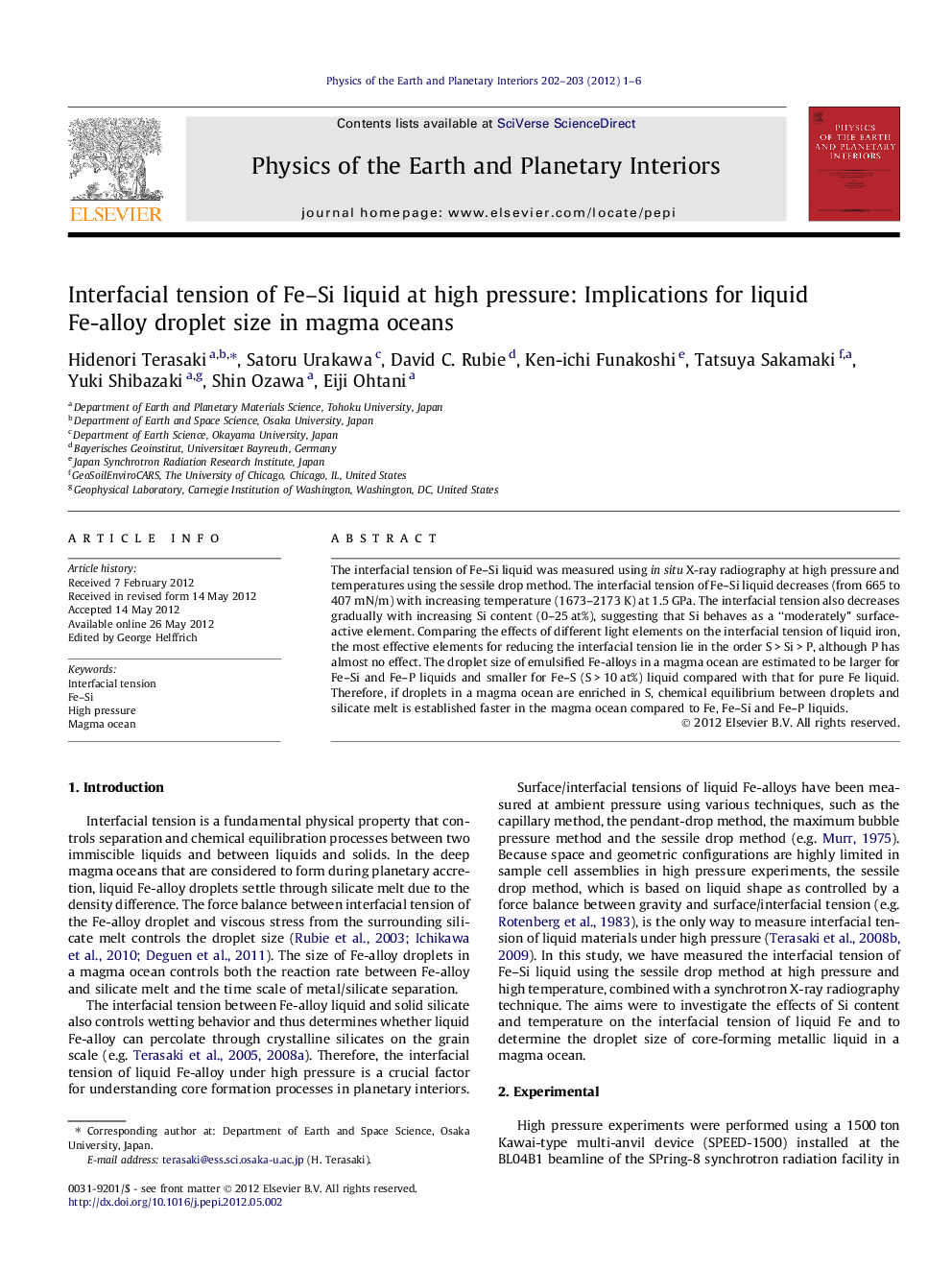| کد مقاله | کد نشریه | سال انتشار | مقاله انگلیسی | نسخه تمام متن |
|---|---|---|---|---|
| 4741765 | 1641533 | 2012 | 6 صفحه PDF | دانلود رایگان |

The interfacial tension of Fe–Si liquid was measured using in situ X-ray radiography at high pressure and temperatures using the sessile drop method. The interfacial tension of Fe–Si liquid decreases (from 665 to 407 mN/m) with increasing temperature (1673–2173 K) at 1.5 GPa. The interfacial tension also decreases gradually with increasing Si content (0–25 at%), suggesting that Si behaves as a “moderately” surface-active element. Comparing the effects of different light elements on the interfacial tension of liquid iron, the most effective elements for reducing the interfacial tension lie in the order S > Si > P, although P has almost no effect. The droplet size of emulsified Fe-alloys in a magma ocean are estimated to be larger for Fe–Si and Fe–P liquids and smaller for Fe–S (S > 10 at%) liquid compared with that for pure Fe liquid. Therefore, if droplets in a magma ocean are enriched in S, chemical equilibrium between droplets and silicate melt is established faster in the magma ocean compared to Fe, Fe–Si and Fe–P liquids.
► We have measured the interfacial tension of Fe–Si liquid at high P and T.
► The interfacial tension decreases with increasing temperature and Si content.
► The droplet size of Fe–S in a magma ocean is smaller than that of Fe, Fe–Si or Fe–P.
► The smaller Fe–S droplet requires longer times of metal/silicate separation.
Journal: Physics of the Earth and Planetary Interiors - Volumes 202–203, August 2012, Pages 1–6